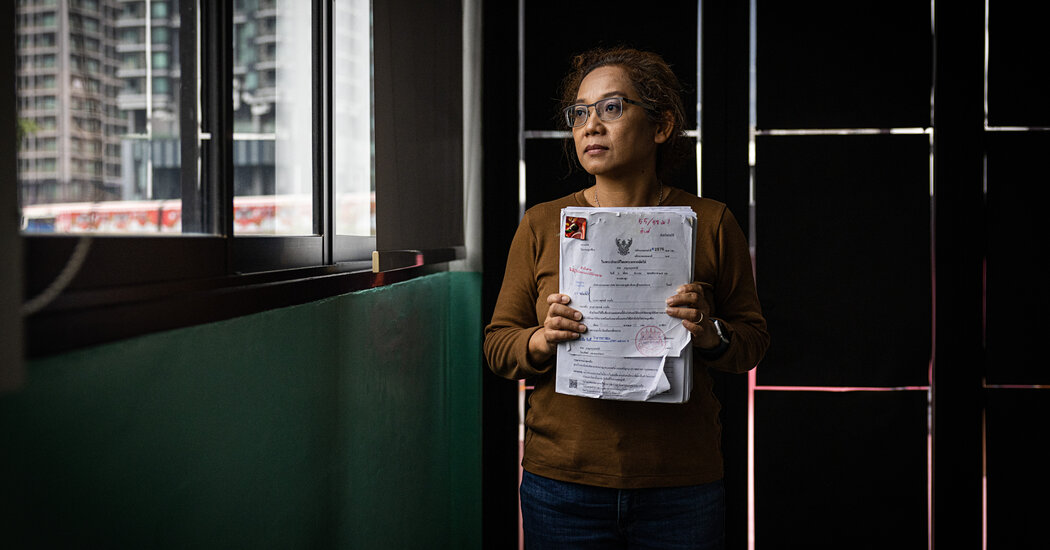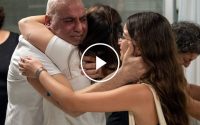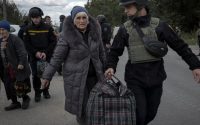Moorhead C. Kennedy Jr., 93, Dies; Hostage Who Chided Foreign Policy
Moorhead C. Kennedy Jr., wearing a dark suit and a green polka-dot tie, was working at his desk in the U.S. Embassy in Tehran on the morning of Nov. 4, 1979, when a Marine burst into the hallway outside his office.
It was a tense period in Iran: A revolution to overthrow the shah was escalating. Mr. Kennedy, a career Foreign Service officer, was filling in for the economics counselor, the embassy’s third-ranking diplomat, who was away on family leave.
“I was very interested in seeing a revolution in progress,” Mr. Kennedy later recalled. “It was a very fruitful time until, all of a sudden, I heard a shout from the Marines, ‘They’re coming over the wall!’ And then a whole new experience began.”
Supporters of Ayatollah Ruhollah Khomeini took Mr. Kennedy and 51 others hostage. They were held for 444 days and subjected to psychological and physical abuse, including mock executions. The global crisis upended Jimmy Carter’s presidency and helped foment in the West an enduring distrust of the Islamic world.
Following the release of the hostages just after Ronald Reagan was inaugurated as president in January 1981, Mr. Kennedy emerged as one of the most recognizable characters of the episode — in part because his wife, Louisa Livingston Kennedy, had been a spokeswoman for families of the hostages, but more so because he had quit the Foreign Service and become a fierce critic of U.S. foreign policy.
Mr. Kennedy died on May 3 in Bar Harbor, Maine. He was 93. The cause of his death, at an assisted living facility, was complications of dementia, his son Mark said.
In speeches, interviews and his 1986 book, “The Ayatollah in the Cathedral: Reflections of a Hostage,” Mr. Kennedy contended that the American foreign policy establishment had taken an imperial, our-way-or-the-highway posture in the Middle East, and especially in countries governed by Islamic law, which he had studied in college and law school.
“When it comes to foreign affairs, the last thing in the world an American is willing to do is to think or to try to think what it would be like to be a Soviet, to be an Arab, to be an Iranian, to be an Indian,” Mr. Kennedy said on Harold Hudson Channer’s public-access TV show in 1986. “And the result is that we think of the world as a projection of ourselves, and we think that others must be thinking along the lines we’re thinking. And when they don’t, we’re troubled by it.”
Mr. Kennedy thought the Iranian hostage episode was an omen for future terrorist attacks.
“The elements in the Arab world and in Iran are reacting against us through another kind of war — a low-intensity war called terrorism,” he told Mr. Channer. “And I think it is a way of trying to make us understand, or at least be aware, that they have a different point of view.”
Mr. Kennedy’s thoughts on U.S. foreign policy were partly shaped by discussions with his captors. Made up mostly of university students, they denounced the shah’s desire to Westernize Iranian society. The shah, Mohammad Reza Pahlavi, was forced into exile in early 1979. A month before the attack on the embassy, the Carter administration allowed him to enter the United States for medical treatment.
“Those Americans who applauded the Westernizing efforts of the shah had little notion of how his programs had disrupted lives at all levels of society,” Mr. Kennedy wrote in his book. “Many Iranians, disoriented, forced to think in new and strange ways, to perform unfamiliar tasks in accordance with unfamiliar norms, humiliated by their inadequacies as they tried to behave as Westerners, and disinclined to become proximate Westerners, second-class at best, sought above all for a renewed sense of their own identity.”
They found it in fundamentalist religion, Mr. Kennedy contended, adding: “The taking of American hostages marked the expulsion of the agent of their disorientation. The violence of that expulsion was a measure of the depth and effectiveness of Western penetration.”
Moorhead Cowell Kennedy Jr., who was known as Mike, was born on Nov. 5, 1930, in Manhattan. His father was a banker and later the president of Goodwill Industries of New York. His mother, Anna (Scott) Kennedy, taught children’s theater.
Mr. Kennedy’s interest in politics and the Middle East began at the Groton School, a boarding school in Massachusetts. He then went to Princeton, where he majored in Asian studies and graduated in 1952.
He learned Arabic at a language school in the mountains of Lebanon. At Harvard Law School, his thesis on Islamic law was later condensed and published in Collier’s Encyclopedia. He graduated from Harvard in 1959 and joined the Foreign Service the next year.
Mr. Kennedy was posted in Yemen, Greece, Lebanon and Chile before his temporary assignment in Tehran. After his release, he rode with Mayor Edward I. Koch in a ticker-tape parade through Lower Manhattan. He retired from the Foreign Service shortly after and founded the Cathedral Peace Institute at the Cathedral of St. John the Divine in Manhattan.
The institute later became the Council for International Understanding, which used role-playing to teach diplomacy to high school students.
Mr. Kennedy married Louisa Livingston in 1955. She died in 2007. His companion, Ellen Kappes, died in 2022. He lived for many years on Mount Desert Island in Maine.
In addition to his son Mark, he is survived by three other sons, Philip, Andrew and Duncan Kennedy; a sister, Maisie Adamson; and 10 grandchildren.
Writing in “The Ayatollah in the Cathedral,” Mr. Kennedy marveled at how naïve he had been about the attack that the Marine had announced in the hallway.
That afternoon, he was supposed to have had lunch with an Iranian banker.
“How could I make lunch?” he wrote. “With the telephones tied up, how could I get word to him?”
Shortly after, he was blindfolded and tied to a chair.


